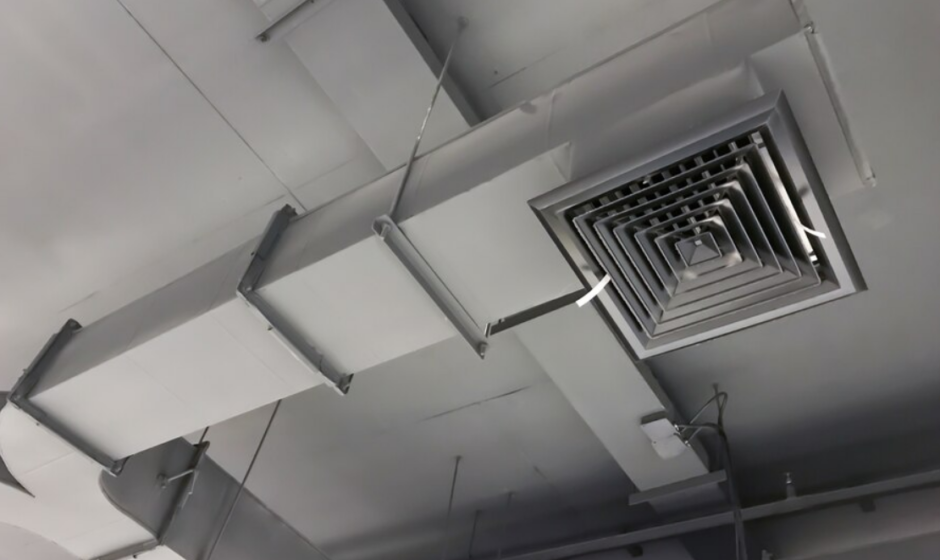Duct cleaning is an essential aspect of maintaining a healthy and efficient HVAC system. Over time, dust, allergens, and debris accumulate in air ducts, affecting the air quality and energy efficiency of your home. While some homeowners may be tempted to clean their ducts themselves, professional duct cleaning is far superior due to the advanced tools and expertise professionals bring to the task. In this article, we’ll explore the top 10 tools that make professional duct cleaning more effective, efficient, and thorough compared to DIY methods.
1. Rotary Brush Systems
Rotary brush systems are one of the most effective tools used by professionals for duct cleaning. These systems consist of rotating brushes that scrub the inner surfaces of the air ducts, dislodging dust, mold, and debris that may be stuck to the walls. The brushes come in various sizes to match different duct sizes, ensuring a thorough clean without damaging the ductwork.
Why DIY Methods Fall Short:
Homeowners typically lack access to such specialized equipment, and using makeshift brushes can be ineffective at dislodging stubborn debris. Manual cleaning methods are also more likely to miss corners and hard-to-reach areas.
2. High-Powered Vacuums
One of the key tools in a professional duct cleaner’s arsenal is a high-powered vacuum system, often referred to as a “truck-mounted vacuum” or “negative air machine.” These vacuums create a negative pressure inside the ducts, sucking out debris, dust, and contaminants from the entire system.
Why DIY Methods Fall Short:
Most DIY duct cleaning methods rely on standard household vacuums that are not designed for the job. These vacuums lack the suction power necessary to remove dust and debris from deep within the ducts, leaving much of the buildup in place.
3. Compressed Air Tools
Professionals often use compressed air tools, such as air whips and air skippers, to blow out debris and dust from ducts. These tools use powerful jets of air to dislodge dust particles and push them towards the vacuum collection point, ensuring that the entire length of the duct is thoroughly cleaned.
Why DIY Methods Fall Short:
Without compressed air tools, homeowners are limited to using brooms or handheld tools, which are often ineffective at removing debris from narrow or curved ductwork. The force generated by compressed air tools is simply not replicable with DIY methods.
4. Video Inspection Equipment
Professional duct cleaners frequently use video inspection equipment to get a clear view of the condition of the ducts before and after cleaning. A small camera is inserted into the ducts, allowing the technician to assess the level of contamination and ensure a thorough cleaning.
Why DIY Methods Fall Short:
Homeowners lack access to video inspection equipment, making it impossible to visually confirm the effectiveness of their cleaning efforts. Without a camera, it’s difficult to know if all the debris has been removed, or if the cleaning has missed certain areas entirely.
5. HEPA Filtration Systems
When duct cleaning is performed, a significant amount of dust and debris becomes airborne. To protect the indoor air quality during the cleaning process, professionals use HEPA filtration systems to capture these particles before they recirculate in the home. HEPA filters are capable of trapping 99.97% of airborne particles, including allergens and mold spores.
Why DIY Methods Fall Short:
DIY cleaners typically lack HEPA-grade filtration systems, which means that dust and contaminants may be stirred up during cleaning and re-enter the living environment. This can worsen indoor air quality and trigger allergies or respiratory issues.
6. Fogging Machines and Sanitizers
After cleaning, professionals often use fogging machines to sanitize the ductwork. These machines release a fine mist of EPA-approved disinfectants into the ducts, killing mold, bacteria, and other pathogens that may be present. This step helps improve indoor air quality and prevents the growth of harmful microorganisms.
Why DIY Methods Fall Short:
DIY duct cleaning rarely includes sanitization because homeowners don’t have access to commercial-grade fogging equipment or the appropriate disinfectants. Skipping this step means that even if the ducts are cleaned, they may still harbor germs and allergens.
7. Agitation Devices
In addition to rotary brushes, professionals use various agitation devices to break up compacted debris inside the ducts. These tools, such as air agitators and rotary air sweepers, are particularly useful for cleaning ducts that haven’t been maintained regularly and have severe buildup.
Why DIY Methods Fall Short:
Manual methods, such as using a broom or duster, are not powerful enough to break apart compacted dust or grease deposits. Without proper agitation, these stubborn contaminants will remain in the ducts, reducing the overall effectiveness of the cleaning.
8. Biological Contaminant Testing Tools
In some cases, professional air duct cleaning will perform biological testing to check for the presence of mold, bacteria, or other harmful microorganisms within the HVAC system. These tools allow technicians to identify and target specific contaminants that require specialized cleaning and treatment.
Why DIY Methods Fall Short:
Homeowners are unlikely to have access to biological testing equipment or the knowledge to interpret the results. Without testing, it’s difficult to know if harmful contaminants are present in the ducts and whether additional treatment is necessary.
9. Portable Air Compressors
Professionals often use portable air compressors to power various air tools during the cleaning process. These compressors generate a consistent flow of high-pressure air, which is essential for cleaning out tight and difficult-to-reach areas in the ductwork.
Why DIY Methods Fall Short:
Most homeowners do not have portable air compressors that can generate the necessary pressure for duct cleaning tools. Without this equipment, DIYers may struggle to remove deeply embedded debris or clean complex duct systems effectively.
10. Access to HVAC System Expertise
Beyond the tools themselves, professional duct cleaners bring specialized knowledge and expertise to the task. HVAC systems are complex, and improper cleaning techniques can cause damage to the ducts or the system as a whole. Professionals understand how to navigate the system without causing harm and can spot potential issues, such as leaks or blockages, that homeowners might miss.
Why DIY Methods Fall Short:
DIY duct cleaning doesn’t come with the benefit of expert oversight. Homeowners may inadvertently damage their ducts by using the wrong tools or techniques, or they may overlook serious issues within the system that require professional repair.
Conclusion
While DIY duct cleaning may seem like a cost-effective option, it pales in comparison to the results that professional cleaning provides. Professionals use advanced tools, such as rotary brush systems, high-powered vacuums, compressed air tools, and video inspection equipment, to ensure a thorough and effective cleaning. Additionally, they have access to HEPA filtration systems, fogging machines, and biological contaminant testing tools to address health concerns and improve indoor air quality. Without these tools, DIY duct cleaning methods often fail to remove all debris, allergens, and contaminants, leaving your HVAC system less efficient and potentially harmful to your health.
Watch this website: Everything.ajmalhabib.com for more information!




